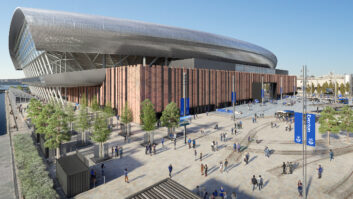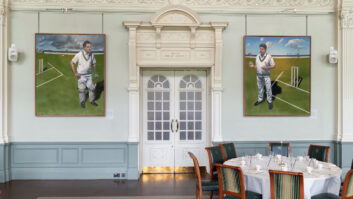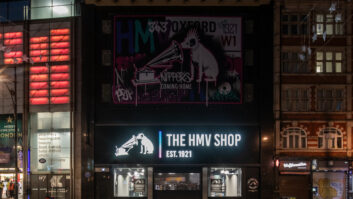Like nearly all areas of the performing arts, theatre has been contending with a radically changed world since the spring of 2020. When the severity of the Covid pandemic finally became clear, events were cancelled – often overnight – and venues effectively mothballed for an indefinite period. Places that had been nightly full of light and sound were suddenly quiet and empty, and the longer the pandemic lasted the more the fear was expressed that some – perhaps many – venues would not return at all.
Fortunately, the bleaker scenarios did not come to pass and – slowly but surely – the past 18 months have witnessed a theatrical resurgence across Europe and the US, in particular. In the UK, September 2022 saw the publication of a comprehensive new study by cultural sector research and consultancy organisation the Audience Agency examining arts engagement in the context of a simultaneously receding Covid threat and emerging cost-of-living crisis.
ILLUMINATING STATS
Among many illuminating statistics, the report found that attendance for in-person arts and heritage had risen from 70% to 90% in the period from spring to autumn 2022. Of those surveyed, 38% had been to see a play, 37% had attended a musical, and 28% had gone along to other forms of live entertainment (excluding music) such as comedy or cabaret.
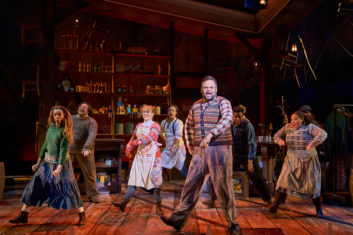 The Audience Agency study also provided some important clues as to how venues and venue operators might need to develop their operations in the future. The desire of people to engage directly with cultural activities had risen again, with those involved in film & audio and performing arts showing a particular desire to obtain more help with spaces to do their activity, as well as access to technology – developments that would also seem to strengthen the case for more immersive theatrical experiences.
The Audience Agency study also provided some important clues as to how venues and venue operators might need to develop their operations in the future. The desire of people to engage directly with cultural activities had risen again, with those involved in film & audio and performing arts showing a particular desire to obtain more help with spaces to do their activity, as well as access to technology – developments that would also seem to strengthen the case for more immersive theatrical experiences.
The report also underlined the continued importance of ongoing measures to prevent the spread of Covid; 79% of respondents cited the importance of enhanced ventilation and 76% still considered the ready availability of hand sanitiser indoors ‘very important’ or ‘important’.
All of this has implications for the design and development of new or refurbished venues. But with the scale of the economic crisis becoming increasingly apparent as weeks go by, it’s clear that venues will have to think more long-term about cost. Almost half of people approached by the study reported that they are worse off now than they were pre-pandemic, whilst 81% are worried about the effects of the cost-of-living crisis on themselves and their households. Inevitably, this is reflected in an expectation of reduced future attendance and a desire for cheaper events.
“It’s shocking to find out that three quarters of the population are predicting that they will have less to spend on arts and culture,” says Anne Torreggiani, CEO, Audience Agency. “Keeping abreast of people’s changing priorities and habits is going to play a vital part in the sector’s resilience.”
COMPLEX REQUIREMENTS
Therefore, it can be argued that theatres now face a complex set of requirements. They must ‘work lean’ in order to keep their own operational costs down (critical given rising energy costs and business rates) and avoid passing on extra expense to the customer. They also need to optimise the use of design and technology to make sure their venues are flexible and conducive to good health. And last but not least, they also have to be open to more immersive theatrical experiences that can both accommodate technologies people are becoming used to in their daily lives and offer them something above and beyond what they can realise in their own homes.
No small feat, then, but fortunately there is plentiful evidence that the next generation of theatres will be ready to deliver on a significant share of these expectations.
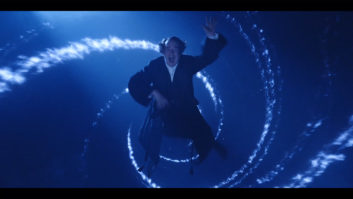 Speaking in September 2022, Joe Graziano – director of sales, entertainment EMEA at audio-visual solutions company Christie – neatly summarised the requirements shaping theatre and other forms of live arts. “Humanity needs entertainment, engagement and social interaction, and whilst it may be scaled down in the here and now, it won’t always be that way,” he said. “Where a user chooses to commit money to being entertained, they seek incredible experiences and value in the whole process [including] booking, customer care, service, quality and sharing the moment. Where lacking, I expect [venues] to improve on areas that ensure users find reason to revisit, whether that be in the initial ticket price versus validity, or dwell-time…”
Speaking in September 2022, Joe Graziano – director of sales, entertainment EMEA at audio-visual solutions company Christie – neatly summarised the requirements shaping theatre and other forms of live arts. “Humanity needs entertainment, engagement and social interaction, and whilst it may be scaled down in the here and now, it won’t always be that way,” he said. “Where a user chooses to commit money to being entertained, they seek incredible experiences and value in the whole process [including] booking, customer care, service, quality and sharing the moment. Where lacking, I expect [venues] to improve on areas that ensure users find reason to revisit, whether that be in the initial ticket price versus validity, or dwell-time…”
Many of these requirements look set to be addressed by venues such as those included in the following round-up of three ‘ones to watch’ in the UK – newly launched or soon-to-open theatres that promise a new kind of experience to patrons, underpinned by the latest AV tech.
CULTURAL DEBUT: SOHO PLACE
There is no doubting the cultural and symbolic significance of the new @sohoplace theatre, which opened for its debut production last October. Not only was it the first fresh London venue to open since the pandemic, it was also the first new purpose-built West End theatre in half-a-century.
Developed as part of the Crossrail project that necessitated the demolition of the much-missed London Astoria in 2009, @sohoplace was designed by architects AHMM, whilst Haworth Tompkins designed the 602-seat auditorium. The theatre also includes a rehearsal room, actors’ green room, bar, restaurant and a terrace, along with a large digital screen located on Charing Cross Road.
COMMUNITY HUB: READING REP
Reading Rep, in Reading, is one of a flurry of venue projects that emphasise the connections between theatre and the local community and/or education. Engaged in an ongoing partnership with Reading College, Reading Rep opened its doors last September and takes the form of a versatile 180-seat performance space.
As with so many of the most exciting new theatre projects, Reading Rep exhibits both a commitment to high-end, ‘state of the art’ technology and an inclusivity of productions and attendance. According to the operators: “Reading Rep produces diverse new voices on the stage, nurturing participants in the classroom and reaching out to the local community. In working alongside the most disadvantaged and marginalised communities in Reading, they continue to promote diversity, inclusion and accessibility in the arts.”
NEW ETHOS: PURPLE DOOR
Due to go into a full schedule of productions in 2023, the new PurpleDoor, Liverpool venue epitomises the latest generation of theatres’ inclination towards a multi-disciplinary ethos. Promising “entertainment without barriers”, PurpleDoor began life as a theatre company in 2008 with a focus on creating work that was “engaging, relevant and routed in our region’s modern identity”. Opening its own dedicated venue has been part of the plan for a while, and now it’s being realised with a space that looks set to resonate with the trend for immersiveness.
According to the operators: “PurpleDoor was born out of a belief that theatre shouldn’t be stuck behind old walls, where you have to sit in the dark and be quiet. What kind of experience is that? By combining a bar and theatre together, we’re creating something truly unique, which we hope others will follow. Our experience puts you at its heart.”
To avoid any doubt, it should be mentioned that there are also new or refurbished theatre projects in many other countries in Europe and beyond, with Germany, the Nordic region and the US among those seeming especially promising at the moment. All of which surely confirms that the desire to experience the magic of live theatre remains undimmed.
NEW TECHNOLOGIES
Speaking recently, Nathan Ihlenfeldt of Stage Audio Works confirmed the inclination of theatres to invest in new technologies – “including those that enable immersive productions” – and a widespread recognition of the need to provide “flexible and high quality AV” for a wide variety of productions.
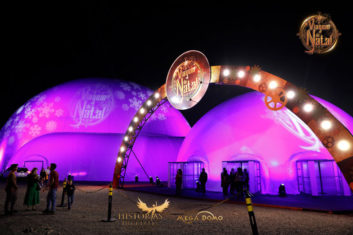 This trend is bound to intensify in light of growing economic and environmental concerns. The less equipment that touring productions are obliged to take on the road the better, especially with fuel prices remaining high. At the same time, theatre companies are increasingly cognisant of the expectation that they minimise their use of energy-heavy technology in favour of high-efficiency solutions – for example, LED-based lighting and the latest generation of display screens. And if they can benefit from them on-site at each theatre without the need to invest in and transport their own gear, then so much the better.
This trend is bound to intensify in light of growing economic and environmental concerns. The less equipment that touring productions are obliged to take on the road the better, especially with fuel prices remaining high. At the same time, theatre companies are increasingly cognisant of the expectation that they minimise their use of energy-heavy technology in favour of high-efficiency solutions – for example, LED-based lighting and the latest generation of display screens. And if they can benefit from them on-site at each theatre without the need to invest in and transport their own gear, then so much the better.
The composition of AV investment will inevitably vary between theatres depending on their remit and the type of productions they want to attract. Nonetheless, it seems pretty certain that the following three areas will remain primary targets for investment:
IMMERSIVE AUDIO
High-end point source or line array audio systems have been an essential requirement for most theatres for many years now. But increasingly, there is also a willingness to explore what immersive, multi-channel audio systems can bring to the theatrical experience. From enhancing on-stage spoken word to adding all kinds of enveloping audio effects, the potential of immersive sound in theatre is immense. Inevitably, budgets and design issues will determine the extent to which individual venues can go down this path, but in terms of reaching new audiences – especially among millennials – it’s likely to be an investment that many will commit to making in the years ahead.
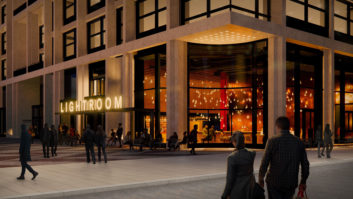 Not only are the latest waves of theatrical lighting smaller and more cost-effective, they also furnish directors and LDs with numerous new creative opportunities. For instance, hybrid motion fixtures can be utilised to display video content or project light on other spaces.
Not only are the latest waves of theatrical lighting smaller and more cost-effective, they also furnish directors and LDs with numerous new creative opportunities. For instance, hybrid motion fixtures can be utilised to display video content or project light on other spaces.
Meanwhile, advances in lighting control systems in recent years have made it easier to configure set-ups to optimise the impact of different productions – and they also require less in the way of training. No surprise, then, that lighting is frequently perceived to have one of the swiftest RoIs.
NETWORK INFRASTRUCTURES
It is practically unthinkable now that any major new theatre would be developed without a sophisticated AV network installation – possibly one that is combined with the IT infrastructure. IP-based networking makes AV in a theatre – or any venue, for that matter – easier to manage, monitor, update and protect from security threats.
In so many respects, 2023 will be a pivotal year in determining the longer-term future of the creative arts. But at the very least, the undoubted presence of an enthusiastic audience and a willingness to engage with new AV technologies and concepts provides grounds for optimism.

